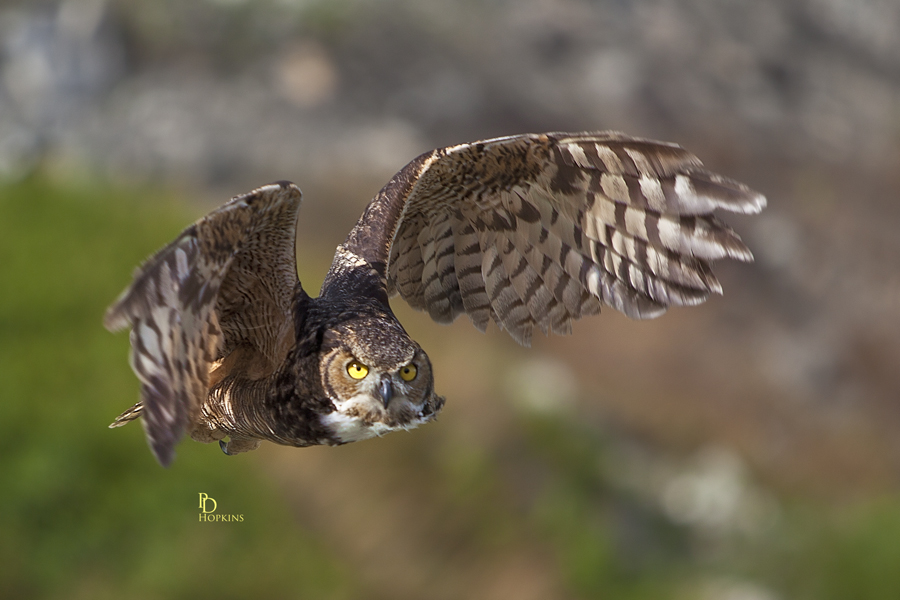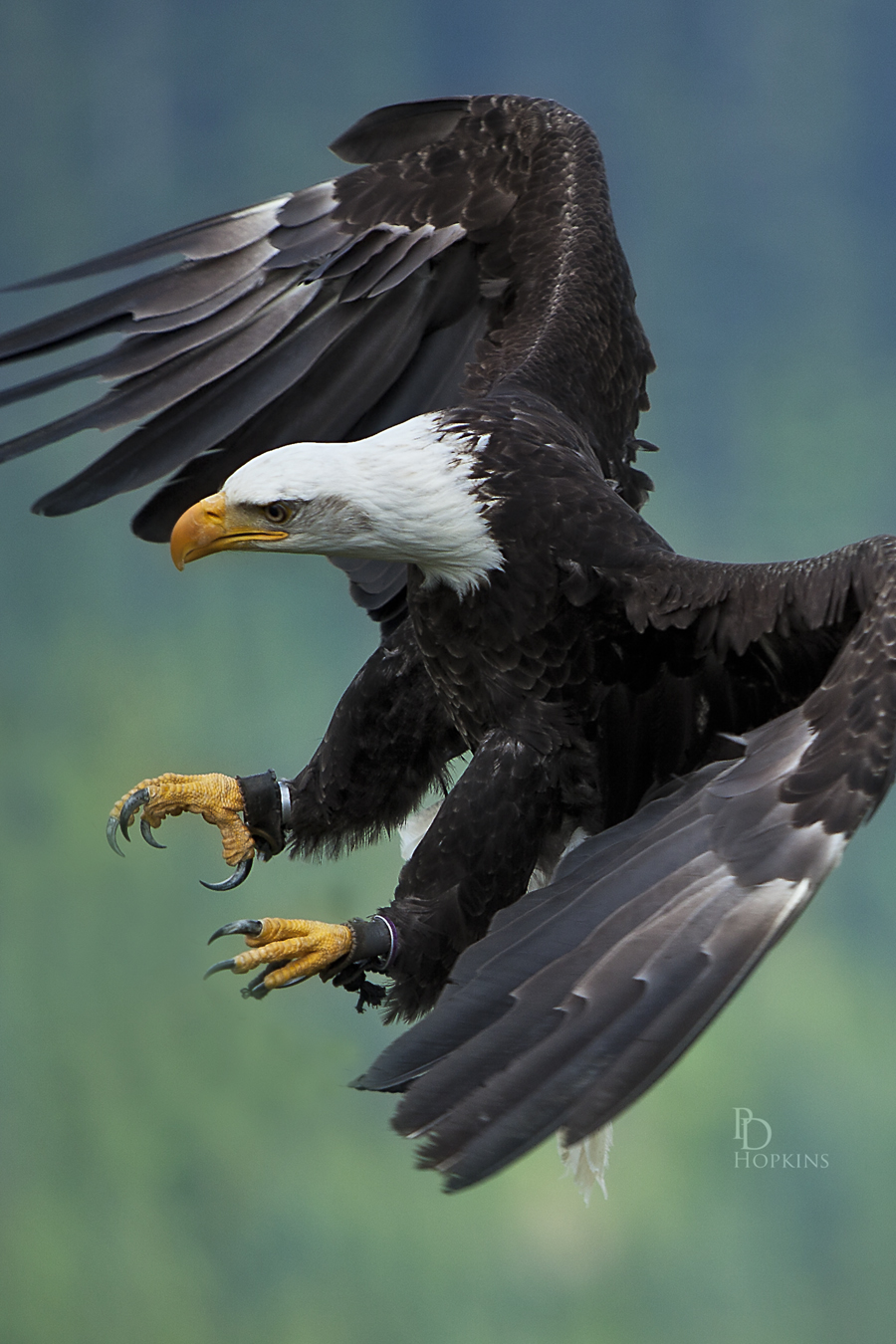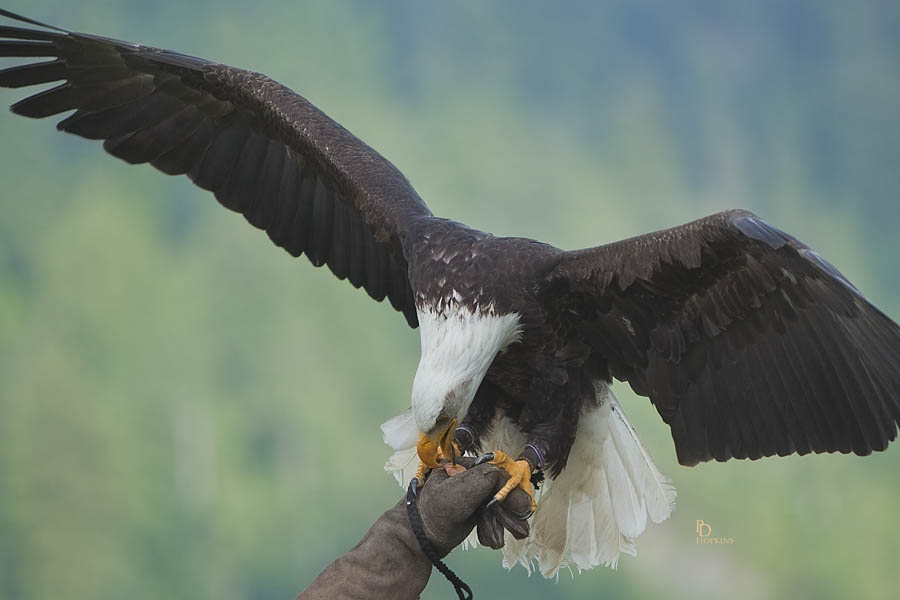Our recent visit to Grouse Mountain in Vancouver included another interesting exhibition, “Birds in Motion”. A group called The Canadian Raptor Conservancy puts on daily demonstrations of birds of prey doing their thing, free flight. This group has a stable of raptors including hawks, falcons, bald eagles, golden eagles, owls and vultures. On the day of our visit we saw a turkey vulture, a red-tailed hawk, a great horned owl and a bald eagle. They did low level flight from handler to handler, demonstrating their flying proficiency. I got pictures of them all, but today I’ll feature those of the owl and bald eagle. Here are the pictures that most appealed to me.

I was fortunate to get this fellow flying by at close range, a great view of an owl in flight. The Great Horned Owl is one of North America’s biggest and most common owls. It can be as tall as 64 cm, with a wingspan of roughly 1.4 m. Males and females look alike, but females are slightly larger. Of all the owls, the great horned owl has the strongest talons. About 30 pounds (13,000 grams) of force is required to release the owl’s grip on an object. Ouch! Great horned owls prefer to hunt at dusk and near dawn. They have excellent hearing and night vision.The great horned owl probably does not have a good sense of smell. It is one of the few predators that will actually kill and eat skunks. Taxidermists who stuff and mount dead owls often have to deodorize them first, because the bird smells so strongly of skunk!
My favourite, the bald eagle. About to land, this eagle had slowed to a speed where he was much easier to photograph. The female bald eagle is 35 to 37 inches tall , slightly larger than the male. Wingspan ranges from 72 to 90 inches. Bald eagles can fly to an altitude of 10,000 feet and during level flight, they can achieve speeds of about 30 to 35 mph.They weigh from ten to fourteen pounds. Bald eagles may live as long as thirty years in the wild.

Having flared his wings for a landing, the eagle descended gently onto the hand of his handler.
Home to Roost
You can see the impressive talons gripping the hand, no surprise the handler’s wearing serious gloves! Also note the beak going for the treat between the handler’s thumb and forefinger. Just like training a dog!


Excellent work, Peter. This kind of photography requires a keen eye, a steady hand and great patience. So congratulations!
Beautiful pictures Peter. Thanks for sharing.
Peter, such wonderfull sharp photos. You must be very pleased.